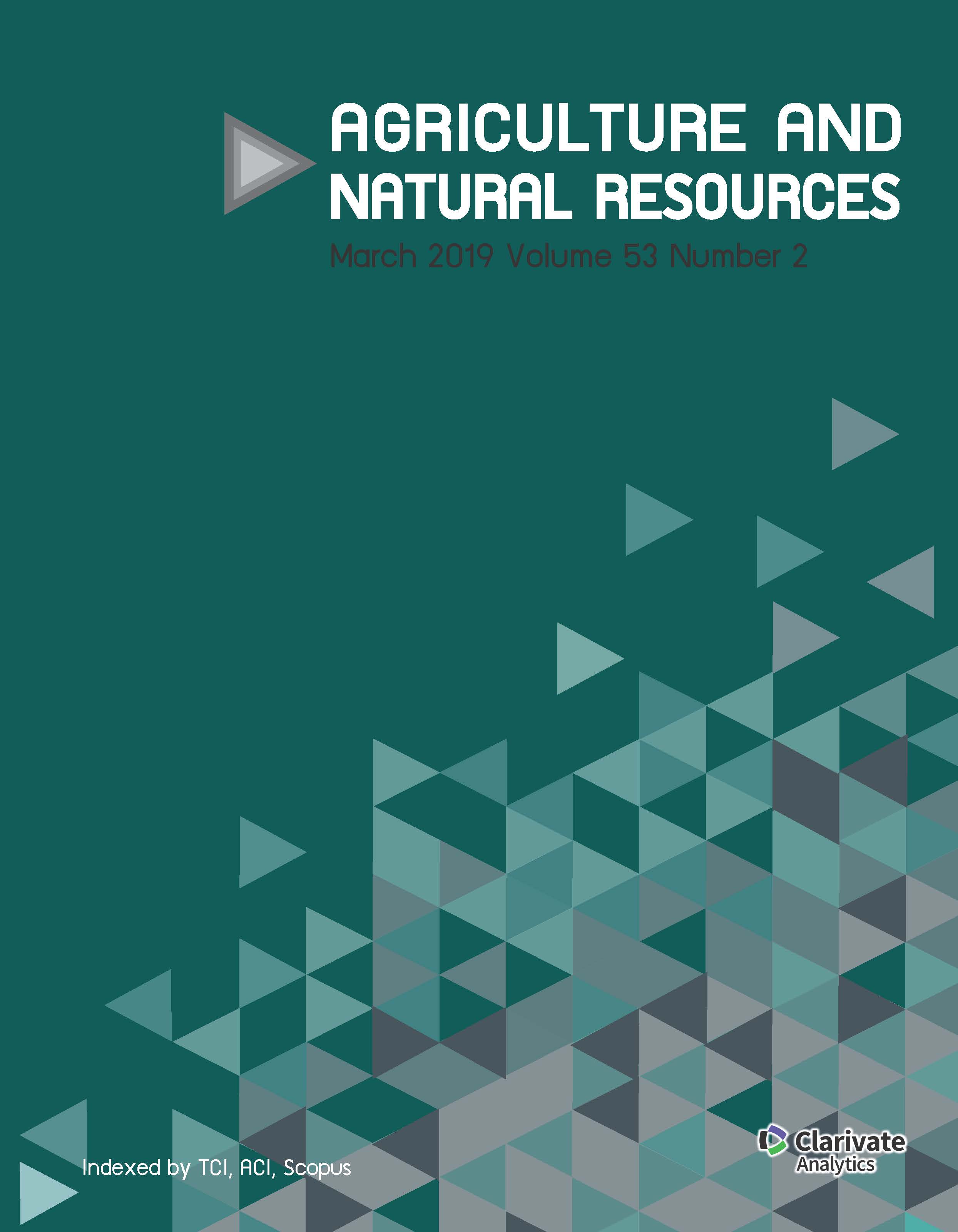Dyadobacter and Sphingobacterium isolated from herbivore manure in Thailand and their cellulolytic activity in various organic waste substrates
Keywords:
Cellulose-degrading bacteria, Dyadobacter sp., Herbivore manure, Organic waste, Sphingobacterium sp.Abstract
Nineteen isolates of carboxy methyl cellulose (CMC) degrading bacteria were screened from various herbivore manures. The strain V5 and W2, isolated from elephant and cow manures, were the top two isolates that produces high cellulase activity of 0.16±0.005 and 0.14±0.0043 U/mL, respectively. Study of nitrogen sources showed that 0.6% yeast extract and 0.8% peptone were favorable for V5 and W2, respectively, to maximize their cellulase activity. Different organic wastes for example rice straw, bagasse, grass and garland, were also applied as carbon sources for cellulase enzyme induction of the isolates. The two isolates (V5 and W2) possess 2-fold higher cellulase activity, when grown in the presence of garland waste (maximum at 0.60±0.0086 U/mL), than the other organic wastes. The molecular identification of the V5 and W2 isolates based on 16S rDNA sequencing analysis appeared in the genus Dyadobacter and Sphingobacterium, respectively.
Downloads
Published
How to Cite
Issue
Section
License

This work is licensed under a Creative Commons Attribution-NonCommercial-NoDerivatives 4.0 International License.
online 2452-316X print 2468-1458/Copyright © 2022. This is an open access article under the CC BY-NC-ND license (http://creativecommons.org/licenses/by-nc-nd/4.0/),
production and hosting by Kasetsart University of Research and Development Institute on behalf of Kasetsart University.







